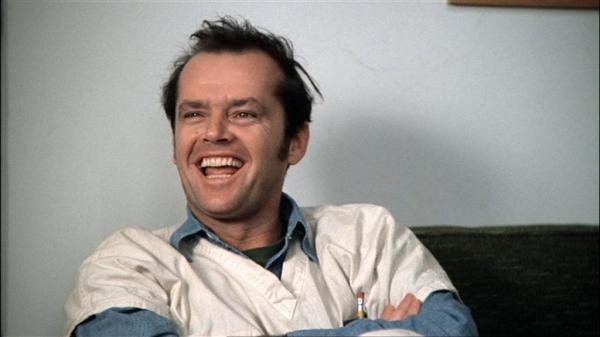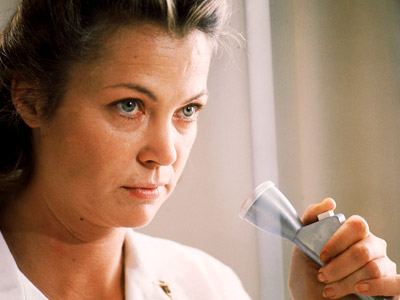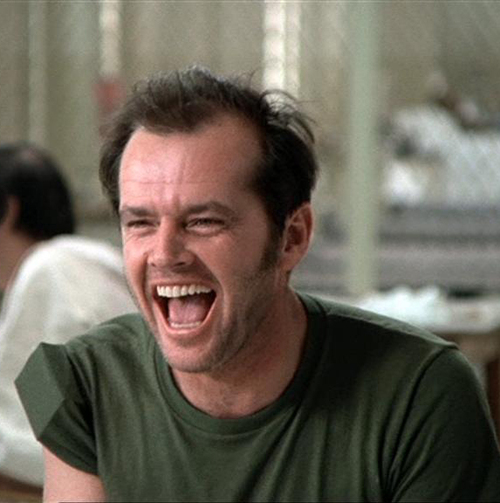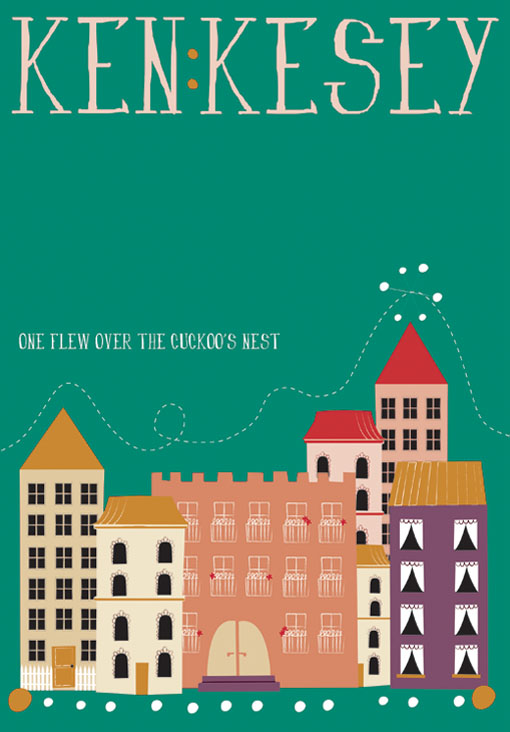
Now that we have seen the film version of ‘One Flew over the Cuckoo’s Nest’ you might be interested in this discussion from the Filmsite. It looks at the background to the film:
One Flew Over the Cuckoo’s Nest (1975) is one of the greatest American films of all time – a $4.4 million dollar effort directed by Czech Milos Forman. Its allegorical theme is set in the world of an authentic mental hospital (Oregon State Hospital in Salem, Oregon), a place of rebellion exhibited by a energetic, flamboyant, wise-guy anti-hero against the Establishment, institutional authority and status-quo attitudes (personified by the patients’ supervisory nurse). [Forman himself noted that the asylum was a metaphor for the Soviet Union (embodied as Nurse Ratched) and the desire to escape.] Expressing his basic human rights and impulses, the protagonist protests against heavy-handed rules about watching the World Series, and illegally stages both a fishing trip and a drinking party in the ward – leading to his own paralyzing lobotomy.
Jack Nicholson’s acting persona as the heroic rebel McMurphy, who lives free or dies (through an act of mercy killing), had earlier been set with his performances in Easy Rider (1969) and Five Easy Pieces (1970). The mid-70s baby-boomers’ counter-culture was ripe for a film dramatizing rebellion and insubordination against oppressive bureaucracy and an insistence upon rights, self-expression, and freedom.
The role of the sexually-repressed, domineering Nurse Ratched was turned down by five actresses – Anne Bancroft, Colleen Dewhurst, Geraldine Page, Ellen Burstyn, and Angela Lansbury – until Louise Fletcher accepted casting (in her debut film) only a week before filming began. And actor James Caan was also originally offered the lead role of McMurphy, and Marlon Brando and Gene Hackman were considered as well. The entire film was shot in sequence, except for the fishing scene (shot last).
It surprised everyone by becoming enormously profitable – the seventh-highest-grossing film ever (at its time), bringing in almost $300 million worldwide. The independently-produced film also swept the Oscars: it was the first film to take all the major awards (Best Picture, Best Director, Best Screenplay, Best Actor, and Best Actress) since Frank Capra’s It Happened One Night (1934). It was nominated for nine Academy Awards in total: Best Actor (Jack Nicholson with his first win after losing the previous year for Chinatown (1974)), Best Actress (Louise Fletcher), Best Adapted Screenplay, Best Cinematography (Bill Butler and Haskell Wexler), Best Director, Best Editing, Best Picture, Best Score (Jack Nitzsche) and Best Supporting Actor (Brad Dourif). “Cuckoo’s Nest” beat out tough competition for Best Picture by Spielberg’s Jaws (1975) and Altman’s Nashville (1975).
The film’s unauthorized screenplay (by Lawrence Hauben and Bo Goldman) was restructured and adapted from author Ken Kesey’s 1962 popular, best-selling novel of the same name so that it would appeal to contemporary audiences. [Kesey wrote the first version of the film’s screenplay.] The film’s title was derived from a familiar, tongue-twisting Mother’s Goose children’s folk song (or nursery rhyme) called Vintery, Mintery, Cutery, Corn. The ones that fly east and west are diametrically opposed to each other and represent the two combatants in the film. The one that flies over the cuckoo’s nest [the mental hospital filled with “cuckoo” patients] is the giant, ‘deaf-mute’ Chief:
Vintery, mintery, cutery, corn,
Apple seed and apple thorn;
Wire, briar, limber lock,
Three geese in a flock.
One flew east,
And one flew west,
And one flew over the cuckoo’s nest.
Read the rest here.
It also outlines the story:
The film’s credits play under an Oregonian wilderness scene at dawn, as a car’s headlights move across the screen. A black-coated supervisory nurse, Nurse Ratched (Louise Fletcher) (known as Big Nurse in the novel) arrives at the locked, security ward of a state mental hospital [on location in Salem, Oregon at the Oregon State Hospital/Asylum], where patient inmates, nurses, and orderlies attend to early morning medications. Pills are dispensed from the Nurses’ Station, a large booth with sliding glass panels.
An energetic, swaggering, wisecracking, non-conformist, rebellious patient/prisoner Randle Patrick (R. P.) “Mac” McMurphy (Jack Nicholson), 38 years old, is escorted into the ward where he meets some of the bizarre, memorable patients/inmates (most of whom are voluntarily committed):
a silent, dignified, huge and towering Indian giant “Chief” Bromden, aka “Broom” (Creek Indian Will Sampson in his film debut) – a “deaf and dumb Indian” “as big as a god-damn tree trunk” – with a father blinded after many years of alcoholism
a pathetic, incessantly stuttering, paranoid boychild, thirty-year old Billy Bibbit (Brad Dourif in his film debut) – shy, virginal, impressionable, and deathly afraid of his mother
an ineffectual, rationalizing intellectual Dale Harding (William Redfield) – relatively sane but unable to get over his wife’s betrayal and adultery when she “seeks attention elsewhere”
an insecure neurotic Charlie Cheswick (Sydney Lassick) lacking self-confidence
a short, smiling Martini (Danny De Vito in one of his earliest roles) with an immature personality
a cynical, trouble-making sadist Taber (Christopher Lloyd in his film debut).
Read more here. It is well worth the effort.



